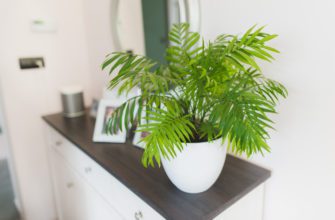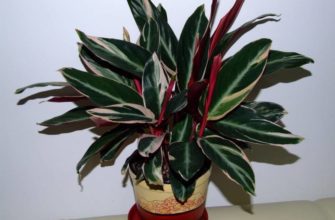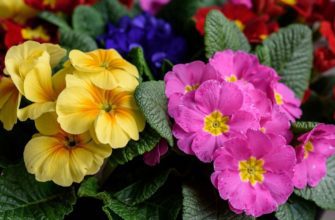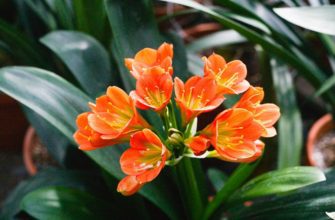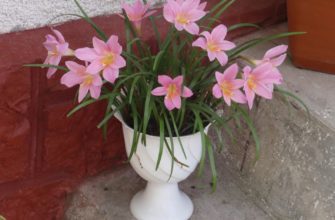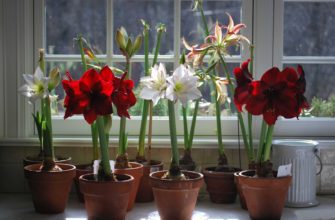Nephrolepis, with its lush and graceful fern-like leaves, is a wonderful addition to any home. Its attractiveness, ease of care and ability to create an atmosphere of natural harmony make it one of the most popular indoor plants.
In this text, we will explore the world of nephrolepis, consider its various species and varieties, and discuss important aspects of growing it at home. Nephrolepis, or indoor fern, has a special beauty that attracts the attention of gardeners from all over the world.
Its leaves, which unfold into graceful fern branches, create an effect of splendor and sophistication. This plant species belongs to the fern family (Polypodiaceae). It is represented by various species and varieties, each of which has its own uniqueness and appeal.
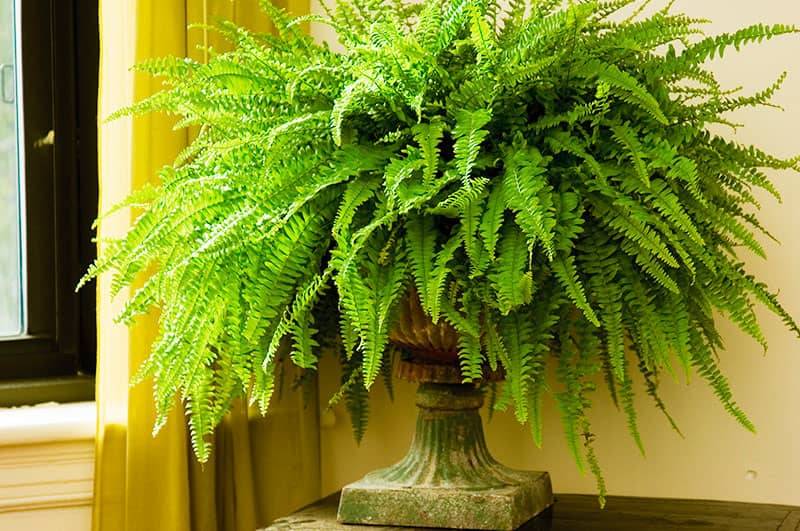
Nephrolepis: general information and description
Nephrolepis, scientifically known as Nephrolepis, is a magnificent specimen of the fern family of plants known for its beautiful and lush fern-like leaves. The word nephrolepis comes from the Greek nephros, meaning kidney, and lepis, meaning scale.
This name reflects the shape and structure of the leaves of this plant. Nephrolepis has many species, but the most popular for growing at home are Nephrolepis exaltata and Nephrolepis obliterata.
These plants have long fern-like leaves that form a rosette at the base of the plant. Nephrolepis leaves can be light green or dark green, with a glossy or matte surface.
One of the impressive aspects of the Nephrolepis is its lushness. The leaves of the plant form a thick green curtain that gives the room a feeling of freshness and natural beauty. Due to its lushness, Nephrolepis are an excellent choice for creating a vertical green oasis in the interior.
Plants are also notable for their ability to clean the air of harmful substances. They effectively trap and remove toxic substances such as formaldehyde, xylene, and benzene from the air, making the air cleaner and healthier for us.
 Optimal growing conditions for Nephrolepis include bright but diffused light, avoiding direct sunlight, especially during the hottest parts of the day.
Optimal growing conditions for Nephrolepis include bright but diffused light, avoiding direct sunlight, especially during the hottest parts of the day.
The plant prefers moderate temperatures, within 18-24 degrees Celsius, and high humidity.. Constant moderate watering and regular spraying will help maintain the necessary humidity for the plant.
Nephrolepis can also be successfully grown in pots or hanging baskets, which allows them to be used to create green accents in the interior. These plants can be a great choice for decorating a living room, bedroom, office or any other room that requires a touch of natural beauty and refreshing green color.
Nephrolepis are beautiful plants with elegant and lush fern-like leaves. They not only decorate the interior, but also help purify the air. With their requirements for lighting, temperature and humidity, nephrolepis can be successfully grown at home, bringing joy and harmony to your life.
Types and varieties of nephrolepis
Nephrolepis (Latin: Nephrolepis) is a genus of ferns from the Blechnaceae (marsh fern) family. Nephrolepis is considered to be one of the oldest genera among modern ferns. It includes more than 30 species and many hybrids and varieties.
Some of the most famous species and varieties of nephrolepis:
- Nephrolepis bostoniensis (Nephrolepis exaltata) is probably the most famous and widespread type of nephrolepis. It is distinguished by its splendor and elegance. The leaves are dark green, glossy and pinnate. It grows quickly, reaching a height of 60 cm.
- Nephrolepis Ruffles (Nephrolepis exaltata 'Ruffles') is a variety of Nephrolepis bostonica, distinguished by larger leaves with a soft purple hue. The leaves have an unusual corrugation.
- Nephrolepis Sidersi (Nephrolepis exaltata 'Seidersii') is a variety of Nephrolepis bostonica with elongated leaves and light corrugation. The leaves are light green and can grow up to 40 cm in length.
- Nephrolepis Wolteri (Nephrolepis exaltata 'Voltaire') is a variety of Nephrolepis bostonica with leaves that have a yellow tint, dark green tops and light centers. The plant is highly resistant to diseases and pests.
- Nephrolepis Greenscat (Nephrolepis exaltata 'Green Scat') - a variety of Nephrolepis bostonica, created by hybridization. It is distinguished by its very lush and dense growth and shape, more flexible leaves, which have individual interweaving of veins.
- Nephrolepis Kimberly (Nephrolepis cordifolia 'Kimberly') is a representative of another species of Nephrolepis. The leaves are heart-shaped and light green. The plant reaches a length of up to 50 cm and grows very well in indirect light.
As you can see from this list, Nephrolepis bostonica is the most popular and widespread species. There are more than 30 varieties of Nephrolepis bostonica, which differ in appearance and leaf size. These include Rusty, Teddy Junior, Philadelphia, Sprengeri.
Nephrolepis is an excellent plant for indoor and office use. Due to its high resistance and adaptability, nephrolepis is easy to grow and is ideal for creating green spaces indoors.
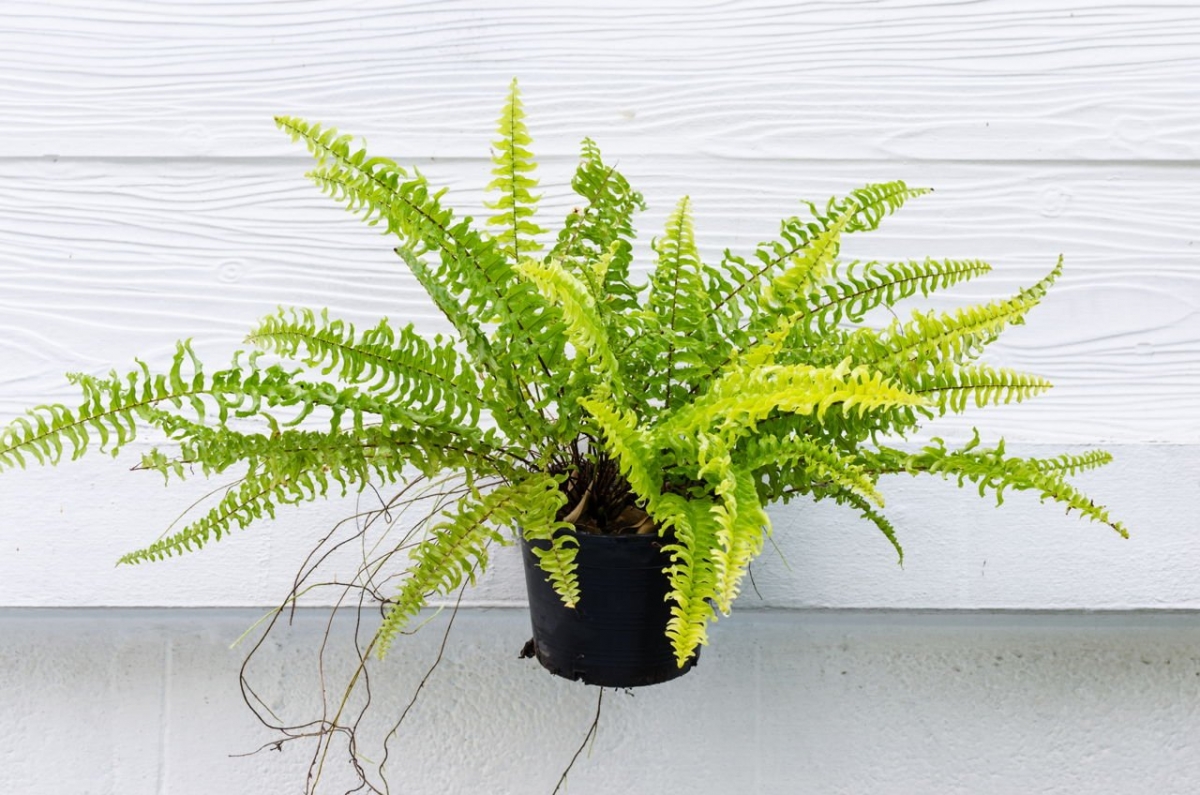
Indoor fern: nephrolepis at home
Indoor ferns, including nephrolepis, are a wonderful addition to home decor. These plants are known for their lush and elegant fern-like leaves.
They bring natural beauty and freshness to the room. Growing nephrolepis at home is possible with the observance of several important aspects:
- Lighting: Nephrolepis prefers bright but diffused lighting. They do not tolerate direct sunlight, which can cause leaf burns. Place nephrolepis near a window with an eastern or western exposure, where the plant will receive enough light, but will be protected from direct sunlight. If you do not have a suitable window, you can use artificial lighting, such as phytolamps, to provide the plant with the necessary brightness.
- Temperature: Maintain a moderate temperature in the room where the nephrolepis is located. The optimal range is approximately 18-24 degrees Celsius. Avoid sudden temperature changes and placing the plant near refrigerators, air conditioners or heaters. Place the nephrolepis in a place where the temperature remains stable and comfortable for human life.
- Humidity: Ferns, including nephrolepis, require high humidity. At home, the air is often dry, especially in winter when the heating is on. To provide the necessary humidity, regularly spray the leaves of the plant with soft water or use humidifiers. It is also useful to place the flower pot on a tray with wet gravel or use special humidifiers to maintain optimal conditions for the plant.
- Watering: Regular watering is an important part of caring for Nephrolepis. Keep the soil in the pot moist, but do not allow it to overwater. Avoid drying out or allowing water to stagnate in the pot. It is recommended to test the soil moisture with your finger or use a moisture meter to determine the need for watering. Water the plant when the top layer of soil becomes slightly dry.
- Top dressing: Nephrolepis require regular feeding to ensure healthy growth and development. Use a fern fertilizer or a general-purpose liquid houseplant fertilizer. Feed the plant every 4-6 weeks during the spring and summer when the plant is actively growing, reducing the frequency of feeding during the winter or dormant period.
- Trimming: Regular pruning will help maintain the shape and density of the nephrolepis. Remove wilted and old leaves, and shorten too long shoots. This will help the plant maintain its aesthetic appearance and promote the growth of new shoots.
- Transfer: Nephrolepis is best repotted every 1-2 years to refresh the soil and give the plant more room to grow. Use a well-drained fern soil or houseplant mix. Repot the nephrolepis in a new pot that is slightly larger to provide adequate root space.
By following these care recommendations, you can successfully grow nephrolepis at home and enjoy its beauty and natural appeal. This plant is perfect for those who appreciate a green accent in the interior and want to add natural harmony to their home.

Signs and superstitions associated with nephrolepis
Nephrolepis, in addition to its natural beauty, is also associated with signs and superstitions in various cultures and traditions. Here are some interesting signs and superstitions associated with the plant:
- Symbol of protection and amulet: In some cultures, Nephrolepis is considered a symbol of protection and amulet. Its lush fern-like leaves are considered a barrier against negative energies and evil spirits. It is believed that placing the plant in the home or office helps create a protective shield that attracts well-being and gets rid of negativity.
- The appeal of wealth and prosperity: In some cultures, Nephrolepis is associated with wealth and prosperity. Its lush green leaves are believed to symbolize abundance and attract financial luck. Placing the flower in your home or work area is believed to help attract prosperity and material well-being.
- Predicting the sex of the future child: In some cultures, there is a superstition that nephrolepis can help predict the sex of an unborn child. According to this belief, if a pregnant woman puts her hand near the plant and the leaf is attracted to her hand, the birth of a boy is predicted. If the leaf is rejected, the birth of a girl is predicted. This superstition is associated with the mystical properties of the plant and attracts curiosity about the future offspring.
- Source of feminine energy and beauty: In some cultures, nephrolepis is associated with feminine energy and beauty. It is believed that the plant enhances the femininity and attractiveness of its owner. It is believed that communication with the flower helps a woman feel more attractive and confident.
- Improving energy and harmony in the home: It is believed that placing nephrolepis in the house helps to improve the energy and harmony inside the room. Its green leaves are considered a symbol of life and growth, and attract positive energy. It is believed that the plant can smooth out tension, reduce stress and create a calm and cozy atmosphere.
However, despite all the signs and superstitions, it is important to remember that these are only beliefs and mystical aspects, and not scientifically proven facts.
Attitudes toward them may vary from culture to culture and from person to person. Ultimately, nephrolepis remains a beautiful houseplant that can bring beauty, freshness, and natural elegance to your home.
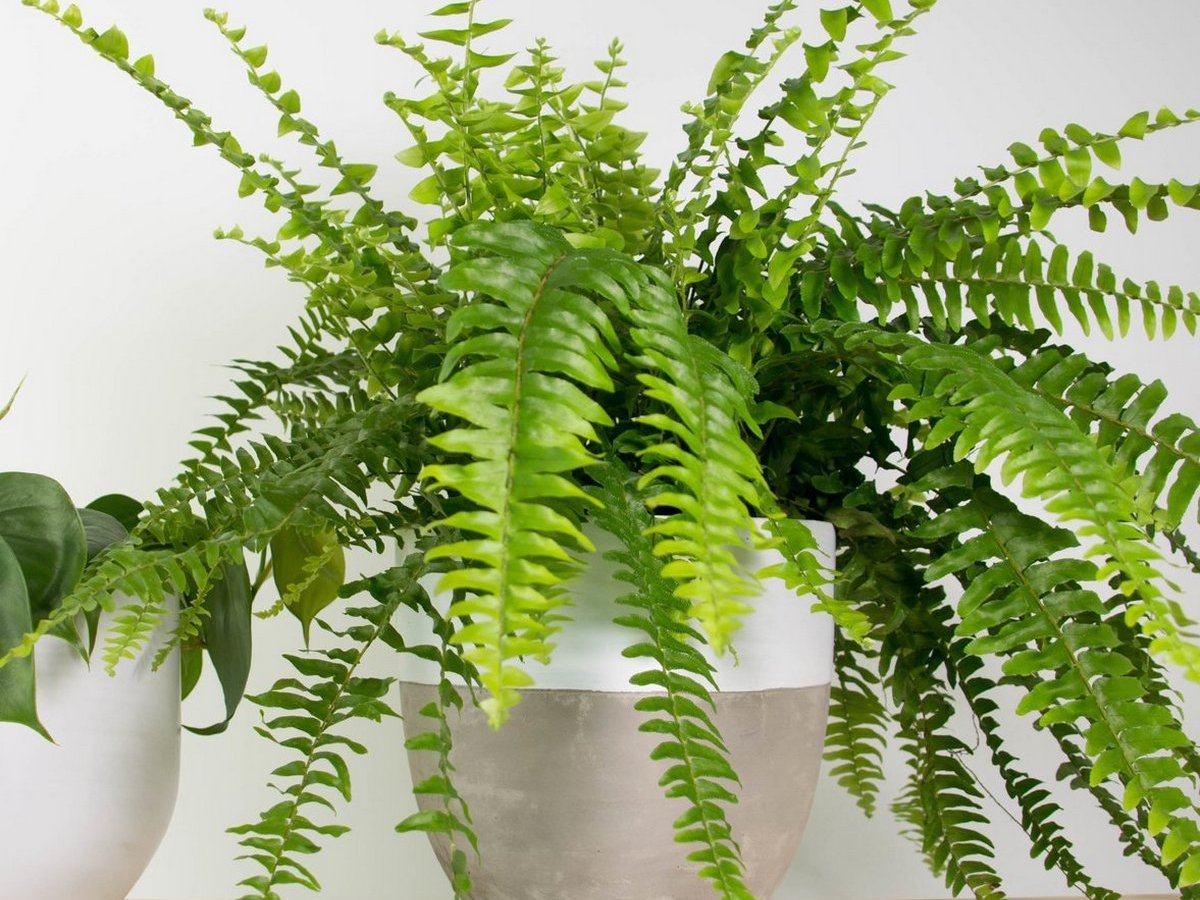
Homeland of nephrolepis
Nephrolepis is a plant that is common all over the world, especially in temperate and tropical zones. However, if we talk about its homeland, we can say that the plants originate from America.
Originally found in Central and South America, as well as the Caribbean region, they have now spread throughout the world and are grown in various parts of the world.
There are over 30 species of Nephrolepis, which are grown in a variety of conditions, including pots and gardens. This plant species has been used as an ornamental plant since the 12th century.
At first they were grown in Europe and later spread around the world. Today nephrolepis grow all over the planet, due to their unpretentiousness to conditions, as well as relative economy in care.
And while nephrolepis will always remain uniquely American, they have found their place as interior decorations all over the world, making them truly global plants.
The Importance of Nephrolepis as a Houseplant
Nephrolepis, as a houseplant, has many significant aspects that make it a popular choice for interior decoration. Here are some of the key values of the plant:
- Aesthetic value: Nephrolepis are a great addition to any interior. Their lush and graceful fern-like leaves create an effect of lushness and natural beauty in the room. The plant can become the central accent in the room or serve as a great addition to other plants, furniture or decor.
- Improving air quality: Nephrolepis are excellent air purifiers. They are able to absorb and process harmful substances such as formaldehyde, benzene and xylene, which may be present indoors due to building materials, furniture or household chemicals. The plants filter harmful substances and release oxygen, making the air fresher and healthier for us.
- Creating an atmosphere of natural harmony: Nephrolepis, due to its natural beauty, creates a sense of natural harmony in the room. Plants have the ability to create a calm and relaxing atmosphere, which helps reduce stress and improve our physical and emotional well-being. Placing a nephrolepis in the home or office can help us feel more connected to nature and provide positive energy.
- Ease of care: One of the important advantages of nephrolepis as a houseplant is its relative ease of care. It does not require special efforts or difficult conditions for its prosperity. Almost anyone can cope with caring for the plant. Regular watering, spraying, fertilizing and pruning will help maintain a healthy and beautiful appearance of the plant.
- Adaptability to room conditions: Nephrolepis are adaptable to a variety of indoor conditions. They can survive and thrive even in medium to low light conditions, making them an ideal choice for rooms with limited access to sunlight. Additionally, these plants can cope with a variety of temperatures and humidity, making them suitable for a variety of climates.
Overall, Nephrolepis plays an important role as a houseplant, with its attractive appearance, ability to improve air quality, create an atmosphere of natural harmony and require minimal care.
They help us get closer to nature, bring freshness and beauty to our homes and offices, and add significance to our lives.

